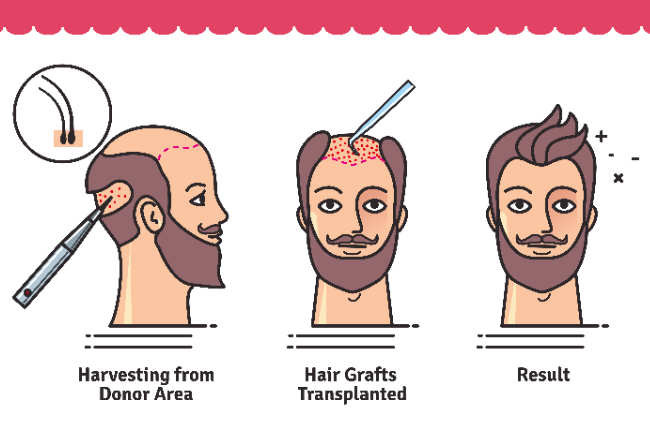Hair loss is a considerable concern affecting millions globally. Hereditary hair loss is the most common, but there is a range of other causes. Aging is perhaps the most obvious cause, cancer treatment (chemotherapy) following in closely. Other concerns such as stress, certain diseases and medications, lifestyle choices such as products, and how you keep the hair, among others, could also lead to hair loss. Following your situation, the hair can re-grow on its own or require immediate care to prevent further deterioration and possibly permanent hair loss. Your hair could gradually thin or fall out gradually, or at times, abruptly. Regardless of the cause and extent of the loss, in most cases, you can remedy the situation by considering a hair transplant.
hair transplant in turkey is quite common, owing to the numerous benefits realized. The process facilitates natural hair re-growth, allowing you to maintain your striking looks. What’s more, if done right, you won’t spot a scar after the procedure. Minimal downtime is the other considerable benefit of a hair transplant, not to mention that you won’t deal with pain during the process. Hair transplant is also cost-effective compared to non-surgical treatment options. Since it doesn’t require significant maintenance like other treatments that could dig deeper into your pockets, a hair transplant isn’t that costly.
The procedure
The hair transplant procedure involves transferring hair you have to a region that you don’t have. For example, it could be taken from the back of your head or other parts and planted in a region you’ve lost hair. The process is painless, as the area is sterilized, and before removing the hair, the surgeon numbs it using anesthesia. You could also opt for sedation, keeping you asleep throughout the procedure. There are two primary hair transplant procedures as highlighted below;
FUT
Follicular unit transplantation (FUT) involves stripping tissues from the donor area, mostly from the head’s back. After removing the scalp and stitching the area, the surgeon separates it into smaller strips known as grafts. They could be as many as 2000 strips, with some containing only one hair. From there, the surgeon makes small holes in the target regions, followed by inserting the pieces, a process known as grafting. The area is then covered using gauze or bandages. The procedure’s primary downside is that it might leave noticeable scarring, especially if you choose a surgeon who is not as experienced.
FUE
The follicular unit extraction (FUE) procedure attracts favor among many users, as the likelihood of leaving noticeable scarring is less. The process involves the removal of individual follicles from the scalp. Your donor region is shaved to facilitate the removal, and you’ll see tiny marks where the follicles were extracted. The follicles are then grafted in tiny holes made in the target region using a microsurgical needle. This is followed by covering with gauze or bandages.
Regardless of the procedure, the surgeon will consider the size f the target transplant size, hair type, quality, and color, while determining the grafts or follicles needed.
A hair transplant procedure takes a few hours or days to complete following the needed work regardless of the type chosen. The recovery period isn’t long; you’ll be allowed to leave the same day of the procedure. After the procedure, the surgeon will carefully remove the bandage and examine the area. Pain or soreness at the transplant and extraction area is common, but it shouldn’t be that much that you are uncomfortable. You might also be swollen, a concern the surgeon addresses by administering medication such as injecting triamcinolone to lessen the swelling.
Your surgeon can recommend measures such as taking antibiotics to avoid infections, anti-inflammatories to deal with swelling, and pain medication to ensure you are comfortable. Other medication could also be recommended to stimulate hair growth.
While hair transplant might seem like an easy and straightforward procedure, a lot could go wrong if not done correctly, stressing the need to ensure you choose an experienced surgeon. You could be frustrated by concerns such as infections, bleeding, losing sensation, and pus drainage in regions the surgery was conducted, inflammation of hair follicles, pain, itching, and swelling, to mention a few concerns. Before diving in, finding a reliable and reputable surgeon for the procedure should be utilized. Among the pointers that can help you choose the best hair transplant surgeon in Turkey include;
Experience
Choose a surgeon who has been in the industry for an extended period. However, ensure that they’ve actively been serving clients, not a surgeon who operates on one case after years. A surgeon specializing in the hair transplant field and who regularly operates has accumulated enough experience to navigate the process comfortably.
Equipment
Ensuring that the surgeon boasts a state-of-the-art facility equipped with the best tools for the job shouldn’t be discounted. With modern cutting-edge tools, you can enjoy a more comfortable hair transplant procedure without worrying about concerns such as infections.
Reputation
What are other clients saying about the surgeon? Asking the surgeon to furnish you with references who can vouch for their services can help you establish their effectiveness. You can also check out reviews and ratings from previous clients. However, don’t believe every testimonial on the surgeon’s website. You can kick your efforts a notch higher by checking our ratings from independent review sites and discussions on various online forums related to hair care.
Gut feeling
Your gut feeling is an essential consideration while choosing the best hair transplant surgeon in Turkey. Choose a surgeon you can comfortably communicate with to facilitate a smooth process. Choosing such a surgeon lets you get the most out of the transplant endeavors since you can openly discuss various concerns, including caring for your hair after the surgery.
Consulting your surgeon before starting the procedure to establish the best strategy and learn what to expect after the procedure shouldn’t be ignored. This is especially noting that you might be irritated by concerns such as not realizing the results you desired in a short period or spot continued hair loss, such as when you are still balding. With professional insights, you’ll be better prepared, ensuring that you get the most from your hair transplant endeavors.







